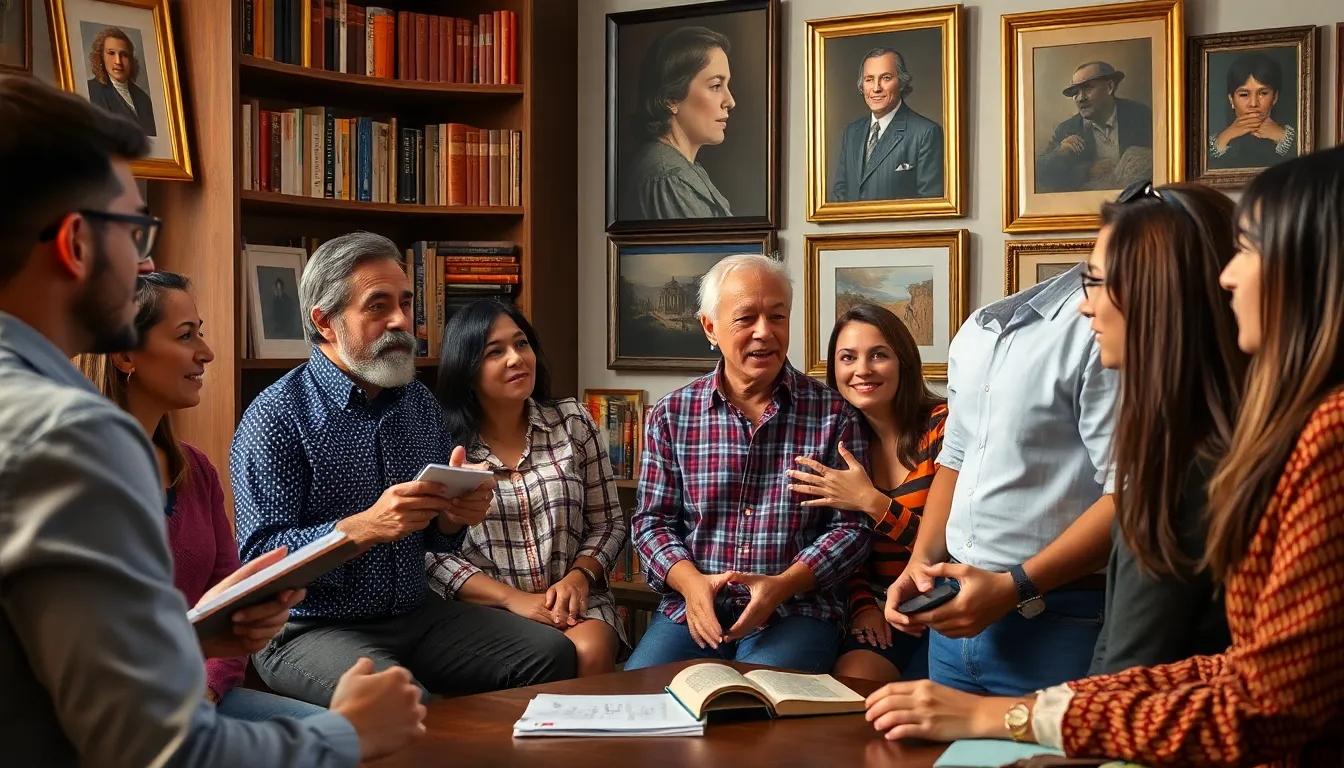In a world overflowing with hot takes and viral opinions, critical opinions stand as the unsung heroes of thoughtful discourse. They challenge the status quo and push boundaries, all while keeping us entertained. Whether it’s a scathing review of the latest blockbuster or a witty critique of a trending social phenomenon, these opinions invite readers to think deeper and laugh harder.
Imagine a world where everyone agreed on everything—yawn, right? Critical opinions add spice to the mundane, making conversations lively and engaging. They’re not just about tearing things down; they’re about elevating the dialogue and encouraging fresh perspectives. So buckle up as we dive into the art of critical opinions and explore how they shape our understanding of culture, art, and everything in between. After all, who doesn’t love a little constructive chaos?
Table of Contents
ToggleUnderstanding Critical Opinions
Critical opinions play a vital role in shaping informed discussions amid a sea of viral thoughts. They provoke thought and encourage deeper engagement with various subjects.
Definition and Importance
Critical opinions involve evaluations that assess the value, quality, and impact of ideas and work. These opinions foster critical thinking by challenging popular notions. Engaging with diverse perspectives helps individuals understand complex topics from different angles. Such evaluations also create a platform for constructive dialogue, prompting people to reflect on their beliefs. As discussions evolve, critical opinions stimulate innovation and societal progress.
Historical Context
The practice of critical thinking has roots in ancient philosophy. Socratic questioning techniques initiated a method of dialogue that emphasized inquiry and reasoned debate. In the Renaissance, critical analysis gained prominence through art and literature critiques. Movements like Enlightenment underscored the importance of reasoning against dogma. Over time, critical opinions found their place in various fields, influencing modern debates in politics, science, and culture. This historical backdrop highlights the enduring significance of critical opinions in fostering intellectual growth.
Types of Critical Opinions

Critical opinions can be divided into two primary categories: professional reviews and amateur critiques. Both types serve unique roles in discussions, offering distinct perspectives that contribute to a richer understanding of topics.
Professional Reviews
Professional reviews come from experts in specific fields. These opinions often appear in academic journals, newspapers, or dedicated review platforms. Professionals base their critiques on extensive knowledge and experience, providing informed assessments of quality, relevance, and impact. Readers benefit from structured evaluations that deliver in-depth analysis and recommendations. Reviews in contexts such as film, literature, or art often rely on established criteria, making them reliable sources for consumers seeking guidance. Well-respected critics bring credibility to their evaluations, influencing public perception and discussion.
Amateur Critiques
Amateur critiques emerge from individuals without formal training but with strong personal opinions. These critiques often manifest on social media platforms, blogs, or comment sections. While they may lack the polish of professional reviews, they provide valuable insights from diverse perspectives. Enthusiastic fans or casual observers often share passionate responses, sparking conversations and community engagement. The authenticity of amateur critiques can resonate with audiences, making them feel connected and understood. These opinions add depth to discussions, reminding readers that everyone’s perspective contributes to the dialogue.
The Role of Critical Opinions in Society
Critical opinions serve as vital components in shaping societal views. They often challenge conventional wisdom and bring new ideas to the forefront.
Influence on Public Perception
Critical opinions significantly influence public perception by shaping how individuals understand various topics. Expert reviews provide credibility, while amateur critiques introduce personal experiences. Media coverage often amplifies these opinions, making them accessible to a broader audience. Social media platforms allow for rapid sharing, fostering a climate where diverse views can flourish. When people read reviews, they gain insights that can alter their buying choices or opinions on cultural phenomena.
Impact on Arts and Culture
Critical opinions drive engagement with arts and culture and encourage audiences to explore new artistic expressions. Reviews and critiques often highlight the deeper meanings behind works, prompting viewers to question their assumptions. Artists benefit from constructive feedback that can refine their craft. Engaging with critical viewpoints can also spark discussions on cultural identity and societal values. Such dialogues often enrich the cultural landscape, enabling a dynamic exchange of ideas that resonates across communities.
Analyzing Critical Opinions
Critical opinions rely on various methodologies for evaluation, ensuring assessments are thorough and reliable. Experts often use criteria such as context, relevance, and originality when analyzing ideas. They apply frameworks that provide structured insights and encourage critical thinking. Different fields might adopt unique approaches; for example, art critics focus on aesthetic qualities, while literature reviewers emphasize narrative techniques. This variety in methodologies enriches discussions and offers readers diverse lenses through which to understand critiques.
Methodologies for Evaluation
Evaluations of critical opinions vary across disciplines, each employing specific methodologies tailored to their domain. Experts often utilize frameworks that focus on context and significance, engaging deeper with the subject matter. This approach allows thorough exploration of ideas, highlighting strengths, weaknesses, and overall impact. Peer-reviewed studies frequently set standards for rigorous assessments, while anecdotal observations add personal dimensions, fostering relatability. Ultimately, these diverse methodologies contribute to a comprehensive understanding of critical opinions.
Case Studies
Case studies serve as practical examples, illustrating the impact of critical opinions in real-world scenarios. In recent years, a notable art critique of a contemporary exhibition provoked widespread discussion, prompting audiences to reassess their views on modern art. Similarly, a retrospective review of a classic novel sparked debates about its themes and relevance in today’s society. Each case highlights how critical evaluations can shape public discourse, influence cultural trends, and encourage deeper engagement with ideas. These studies emphasize the necessity of critical opinions in fostering meaningful dialogue and driving cultural awareness.
Critical opinions play a pivotal role in enriching discussions and shaping societal views. By challenging established norms and introducing fresh perspectives, they stimulate deeper thinking and engagement. The interplay between professional reviews and amateur critiques creates a dynamic dialogue that enhances understanding across various fields.
As individuals navigate an increasingly complex world, the value of critical evaluations becomes even more apparent. They not only foster intellectual growth but also encourage a culture of questioning and exploration. Embracing diverse opinions ultimately leads to a more informed and vibrant society, where ideas can flourish and evolve.





